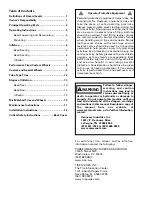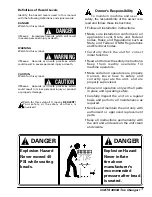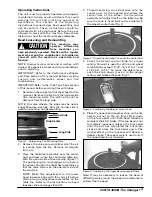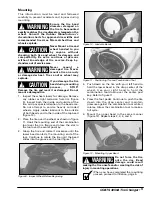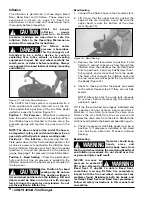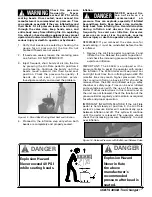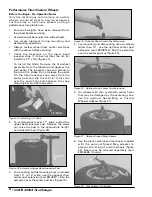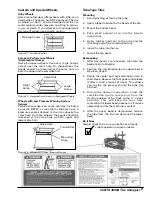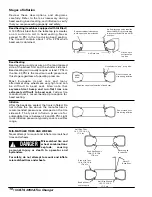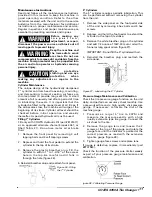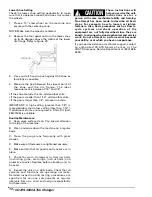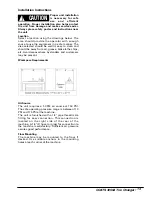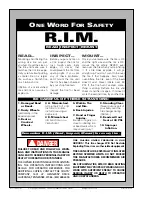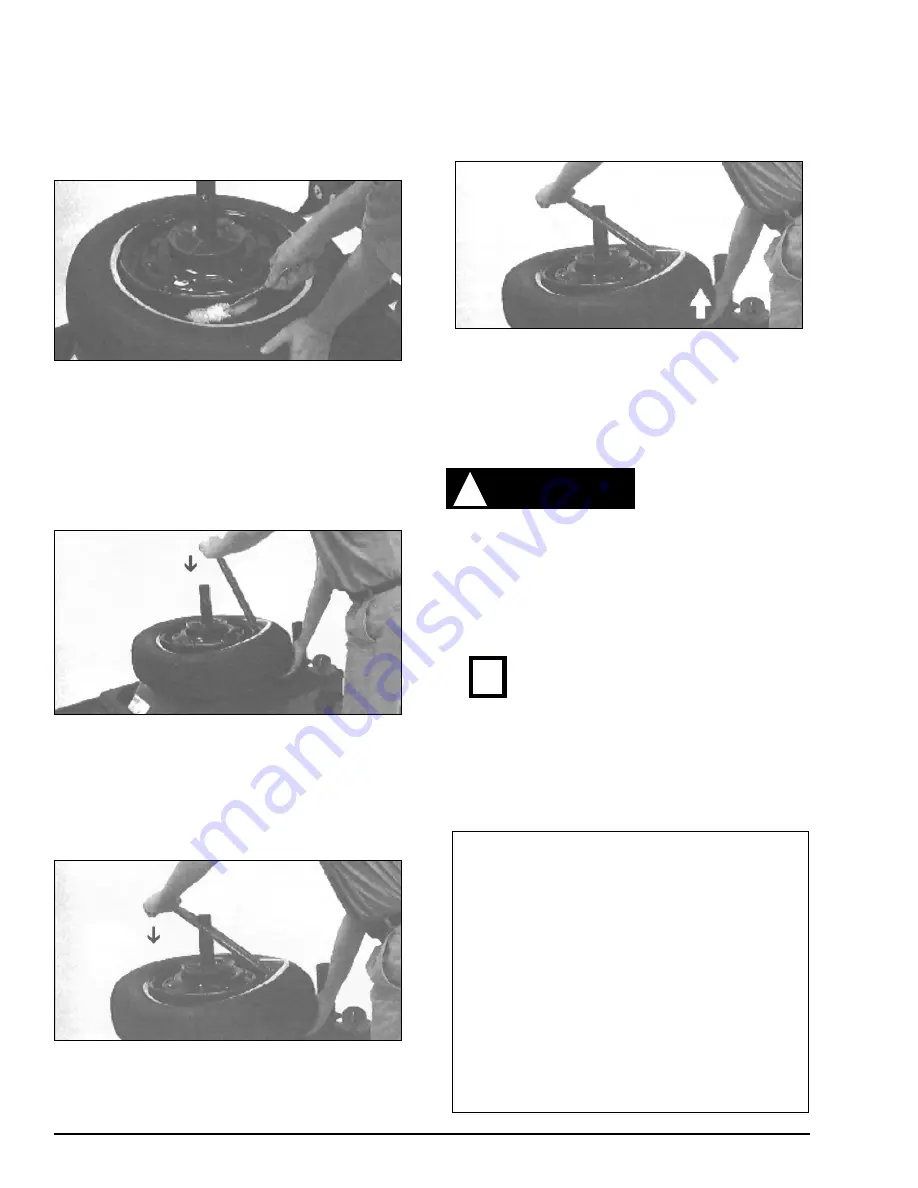
7.
Once the tire beads have been loosened from
the bead seat of the wheel, lubricate the beads
liberally with rubber lubricant (fig.5).
Note: Rubber lubricant makes demounting
easier, helps eliminate damage to the tire
beads, and assists the movement of the
combination tool.
Figure 5 - Lubricate Tire Beads
8.
Position the combination tool so that it aligns
with the center post key. Insert the demount
end of the tool between the tire and rim. Push
the tool down towards the center post as
shown in figure 6 to lift the tire bead over the
rim.
IMPORTANT: Make sure the tool is oriented as
shown in figure 6.
Figure 6 - Align, Insert, and Push Down on the Tool
9.
Continue to push down on the tool until the
center post key protrudes through the slot in
the tool and the tool stops against the shoulder
of the key. The tool is now positioned properly
for operation of the center post key (figure 7).
Keep a firm hold on the tool at all times to
prevent accidental disconnet.
Figure 7 - Tool Properly Positioned
10. Press down on the foot pedal. The
counterclockwise rotation of the center post
key and combination tool will remove the
upper tire bead from the rim. Lifting up on the
tire with the left hand as shown by the arrow in
figure 8 helps in demounting tougher tires.
Figure 8 - Removing Upper Bead
10. To remove the lower bead from the wheel,
repeat steps 8, 9, and 10.
REMEMBER: Refer to the Tube Type Tire
section of this manual before servicing tires
with tubes.
Fast or jerky
movement of the bead
loosener shoes or the
combination tool indicates low cylinder oil level,
and may result in throwing or disengaging of the
tool, possibly causing serious injury or death to
operator or bystander. Do not operate until it has
been returned to proper operating condition. See
the Maintenance section of this manual for further
instructions on maintenance and adjustment.
When the demount operation is
complete, proceed with Mounting,
page 5.
4 • COATS 4050A Tire Changer
Operator Protective Equipment
Always wear durable work clothing during tire
service activity. Shop aprons or shop coats may
also be worn, however, loose fitting clothing
should be avoided. Tight fitting leather gloves
are recommended to protect the operator's
hands when handling worn tires and wheels.
Sturdy leather work shoes with steel toes and
oil resistant soles should be used by tire service
personnel to help prevent injury in typical shop
activities. Eye protection is essential during tire
service activity. Safety glasses with side shields,
goggles, or face shields are acceptable. Back
belts provide support during lifting activities
and are also helpful in providing operator
protection.
DANGER
!
✓


